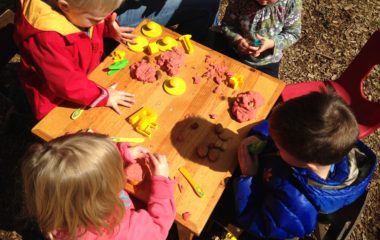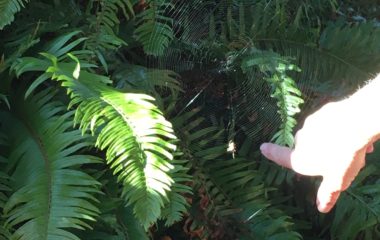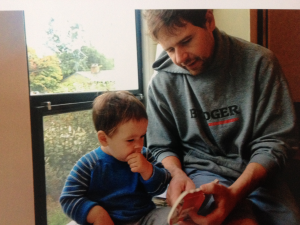 I am so thankful for each of these children and their families. Each child, and family, brings new energy to the preschool. Each child has a unique view of their world, genuine curiosity about how their world works and an interest in interacting with the people in their world. It is these little people, and their love of learning, that brings me such joy. Their desire to learn is what energizes me. Each month I have a lunch date with two friends that used to teach in the NSC cooperative preschool program. When we are together we always talk about what I am doing and what is new with the children. They miss seeing that sense of wonder as a child engages in learning about their world.
I am so thankful for each of these children and their families. Each child, and family, brings new energy to the preschool. Each child has a unique view of their world, genuine curiosity about how their world works and an interest in interacting with the people in their world. It is these little people, and their love of learning, that brings me such joy. Their desire to learn is what energizes me. Each month I have a lunch date with two friends that used to teach in the NSC cooperative preschool program. When we are together we always talk about what I am doing and what is new with the children. They miss seeing that sense of wonder as a child engages in learning about their world.
I am so thankful that I can be a teacher of young children and be outside! It has been a double blessing to be able to teach preschool while developing an outdoor classroom where these children can explore, engage and interact with nature. As my family can tell you, I love being outside and I love the simple pleasures in nature – leaves, trees, the beach, waves, drift wood, shells and rocks. Curt always has a pocketful of my treasures to tote back home. Everyone in my family knows how much I love rocks. This summer Greta’s Dad gave me some very special rocks to bring back from our trip to Door County, one year Nick gave me a glass jar full of shiny rocks as a Christmas present, my brother called and asked if I wanted a bucket of black rocks and Danielle just brought me back a bag of rocks from one of her adventures. In the play area, you may remember that the leprechauns brought rocks as gifts to the children and you may have noticed that I hide ‘special’ rocks in the sandbox, the car table and garden area for the children to find. I love that I have some fellow ‘rock lovers’ in our preschool. These little ones are just as excited about a rock as I am!
It makes me smile to see the children marvel at the wonders found in nature. The leaves as they change colors, the way the trees sway in the wind, the patterns on the snail shells and the delicate blossoms of the raspberry plants. When they are outside they are using all five senses. They can see the beauty of nature but they can also hear, feel, smell and taste nature. They hear birds singing, see the wind in the trees, feel the movement as they walk on the gravel and watch as the rain rolls off the top of the tent. They can smell the flowers, taste the red tomato they picked off the vine and feel the prickle of the small thorns on the stalk as they look for another red raspberry. Each experience has more than one sense – seeing the colors, hearing the sounds, touching the textures, smelling the fragrances and tasting what we grow in the garden. When they play outside they are using their five senses to categorize what they encounter. As well as building a vocabulary – both in spoken words and visual images – using these new skills they are developing an awareness of their body and how it works. Being outside on uneven ground helps them learn how their body moves. They are developing balance and coordination skills as they run, climb and jump. This movement engages their brain in ways that smooth surfaces do not. They need to problem solve when the ground is bumpy, they take developmentally appropriate risks as they develop some of these skills and they become more aware of how their body responds as they walk on gravel, run on uneven ground, climb on a stump or balance on a log. They build community as they work together to build a space ship, a teeter totter or a chair using the garden timbers. I marvel at the determination they have as they lift and carry those timbers. They need to communicate their plan, listen to their friends as they express their ideas and work together as a team to accomplish the task. As one child said, “This is hard work. We did it!”
I feel so blessed to be a part of their experiences as they learn the importance of the living things in their world. They are learning that plants grow if they are watered, that snails need to be touched gently and cared for, that mother birds feed their young and that spiders work hard to build a web. They are learning empathy and that empathy will carry over to how they respond to their friends and family. They are becoming caring and loving people. How awesome is that?! What a blessing to be a part of their world as they develop this sense of compassion for living things.
I am so thankful for children, for teaching, for nature, for being outside and for having an opportunity to share this small window of time with your children.
I hope you took time this week to enjoy the Wonder of Learning that is going on right now as your child engages in the world. It is a special time – it is the Wonderment of Childhood.
– Teacher Janice









 Let them experience their own books, check books out from the library, make story books from pictures of places and people they are familiar with, have them witness the adults in the world reading books.
Let them experience their own books, check books out from the library, make story books from pictures of places and people they are familiar with, have them witness the adults in the world reading books.
